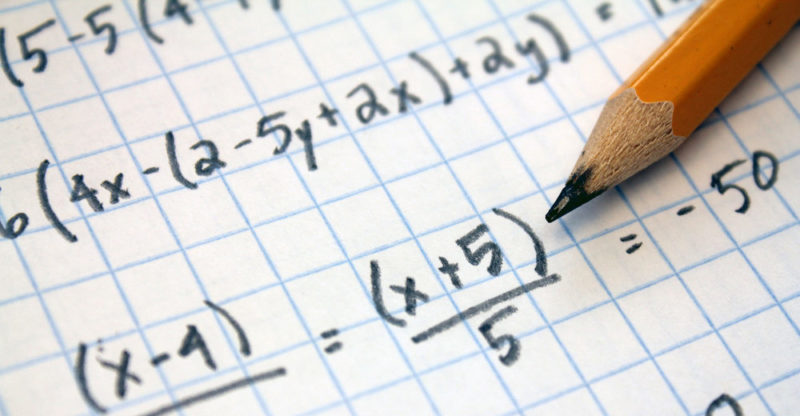We explain what the formal and factual sciences are and how they are classified. Also, what are its general characteristics and examples.
What are formal and factual sciences?
The formal sciences are those sciences with a systematic base that analyze coherent and rational knowledge through logical processes applied in a physical-natural reality ( mathematics , logic, statistics, computer science ).
The factual sciences seek coherence between the facts and their representation : they analyze the physical-natural reality of the real world through observation and empirical experimentation ( chemistry , physics, biology , etc.).
The formal and factual sciences, on the other hand, analyze real and ideal elements alike . For example: the human being is a 'real' object whose environment is no longer 'natural' but one of his creations, something that is neither natural nor unequivocal or permanent.
Characteristics of formal and factual sciences :
Object of study

The formal sciences have as their object of study the empty forms of content , the objects created by man in his mind, their forms. The factual ones are aimed at physical and natural reality, the real world: study the facts and their correlations.
The formal and factual sciences analyze real objects in ideal environments , and ideal objects in formal settings (such as emotions in the human mind).
-
The truth"
The factual sciences consider as "truth" that which approves the contrast of the analysis, the results, and verifies or refutes the initial hypothesis.
The result of the analysis is considered a “provisional truth” , since in this analysis the reality and the framework of the analysis can be modified.
Methodology

In the formal sciences, the application methodology is the deductive method: induction, deduction and logic . In factual science, the method is one of observation and experimentation: the scientific method . The methodology of both will also depend on the object of study and its environment and environment, sometimes real, and sometimes ideal.
-
Tools
Classification

The objects of study of the formal and factual sciences can distinguish them, according to their application, into three main branches:
- Natural Sciences. They analyze the environment , the natural environment, climatic adaptations and others .
- Social Sciences. They analyze man as an individual, and more.
- Cultural sciences. The human as part of a time and a place - society .
-
Target
- Formal sciences. The goal is to find evidence, to demonstrate a notion.
- Factual Sciences. The goal is to prove or disprove initial hypotheses.
-
Symbols
 In formal science symbols are often empty and interpretable (for example, a calculation like 'x + 5 = 7' deserves the interpretation that defines 'x'). In factual science the symbols are determined, not open to interpretation (in the chemical composition of water 'H 2 O', 'H' is the element Hydrogen unequivocally).
In formal science symbols are often empty and interpretable (for example, a calculation like 'x + 5 = 7' deserves the interpretation that defines 'x'). In factual science the symbols are determined, not open to interpretation (in the chemical composition of water 'H 2 O', 'H' is the element Hydrogen unequivocally).The symbol used must be adapted to the object of the study , being able to use unequivocal symbols in some cases, although normally the analysis of the symbols is required (if a historical period is studied, it will be adapted to the site, the people analyzed, and more).
Verification

In the formal sciences the method of verification must correspond to logic: the results work in a strict theory, and under all conditions. In the factual, the verification will be demonstrated in practice : the rule is fulfilled as long as it happens under certain conditions. Therefore, the verification will depend on the analysis or study carried out, in consideration of the objects.
-
Time
Examples
They include what is usually called "natural" sciences (biology, geography , climatology, etc.), the "social" ( history , literature , demography , etc.) , and also the so-called "cultural" ( psychology , sociology , anthropology , economics. , politics , etc.).
The above content published at Collaborative Research Group is for informational and educational purposes only and has been developed by referring reliable sources and recommendations from experts. We do not have any contact with official entities nor do we intend to replace the information that they emit.
Passionate about understanding and contributing to a world that does not stop changing. New forms of Work, Sustainability and Technology. For many years he has worked as a creative for large international companies. He has a Ph.D. in information technology and he has been doing quantitative research in the interdisciplinary areas of information systems, cyber security, data analytics and artificial intelligence. He continue to look for creative solutions through technology to help companies to be more humane and sustainable..
Leave a reply
Your email address will not be published. Required fields are marked *Recent post

Sport: What Is It, Types, Risks, Features, Characteristics and Examples

Dogs: Emergence, Features, Characteristics, Feeding and Breeds

Story: Definition, Elements, Structure, Features and Characteristics

